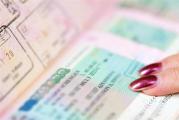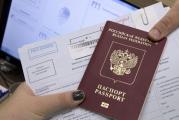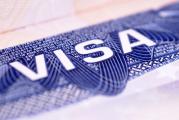Rules for entering the Schengen area
A Schengen visa allows you to freely move around 28 European countries. In this case, a pass is to obtain documentary permission from the embassy of only one state that is part of the Schengen zone. But even such loyalty has rules for controlling Schengen and passing through borders. Neglect of these principles and violation of the terms of stay can lead to the tourist being blacklisted for the issuance of stamps.
Many travelers do not always correctly interpret the rules for using the Schengen with its free movement. There are three main requirements that allow you to plan your movements correctly and not break the law:
- first entry rule;
- the principle of preferential stay in the state;
- stay limit.
Knowing these features will allow you to understand which consulate of which country to submit documents to, will not allow you to violate the requirements, thereby eliminating negative consequences.
First entry
To date, the list of European states between which unimpeded movement is allowed with a permit and are parties to the Schengen Agreement, consists of 28 states. Although it all started with only five powers.

Map of the Schengen area
Travelers quite often, when planning to visit Europe, choose combined tours that cover several territories at once. It is for such people that the question arises of which country's embassy to contact. The situation with a visit to only one place is much simpler - a package of requirements is submitted to the appropriate consulate. In addition, you can use the services of a travel company or a visa center. Arriving, say, in Rome with an Italian visa and booking a hotel there, you can go on an excursion to neighboring Austria or France. In this case, there will be no violations - the stamp is worth the power in which the arrival was made, the excursion to another state is short-term. This is the rule of the first entry into the Schengen.

Schengen visa - a single agreement for all countries
Another thing is when it is supposed to fly to Italy, but travel around France, while requesting an entry permit at the French consulate. The questions of officers of the border services of Italy will be quite natural, on what basis is not the permission that is necessary open. It is likely that a tourist crossing the border for the first time in this way is unlikely to be denied a pass. But it is worth knowing that one such violation is enough for consular services to put a person on the black list.
Thus, the most important thing is to fly in and, if possible, fly out of the city where the citizen arrived at the airport. Quite often, this type of single-entry visa is used for registration for organized tourist groups traveling by bus tours around Europe. Such routes can combine up to 10 states in one tour. But in view of the fact that in each country the group spends no more than 1-2 days, such a journey is regarded as transit, and preference is given to the direction into which the entry was made. Moreover, it does not matter at which checkpoint the stamp was placed - but at the airport zone, at the railway junction or the highway.
It is not uncommon for travelers to deliberately put a stamp in the embassy of the country that is most loyal to our compatriots.
Among them:
- Greece;
- Italy;
- Austria.
Visa formalities here are not difficult, and the Greek consuls even give approval within 3-5 days. Tourists make such a choice in order not to complicate, so to speak, their life before the holidays, because it is known that Germany, Great Britain, Switzerland, Denmark require not only an impressive list of documents, but also their notarized translation. It takes time, nerves, and additional expenses. But despite the check mark on arrival, it is advisable to spend some time in this place so that there are no unnecessary questions at the exit.
The principle of preferential residence in one country
The rules for issuing a Schengen visa also apply to the mechanism for choosing the main direction. The traveler needs to foresee his itinerary in advance. Spontaneous decisions on the territory of European cities with chaotic movements can lead not only to a violation of the visa order, but also to deportation.
So, for example, preference should be given to the consulate of the state that accounts for most of the vacation, work or study. If a foreigner, in fact, does not violate the requirements of the location of the first entry when he arrives in Rome with an Italian visa, then it is another matter when he not only does not fly here with an Italian visa, but does not even live.
Solo tourism has become very popular among independent travelers over the past 10 years. Building routes, combining cities, collecting documents and obtaining entry permits is not at all a difficult task. But if, when buying a combined tour in an agency, the task of deciding which stamp to put lies with the tour operator, then in this matter the tourist must rely on himself. For example, it would be right to purchase profitable air tickets to one country, move in a rented car and live almost the entire vacation time in the state in whose embassy permits were opened.
If there are several directions on the route that are almost the same in time of stay, then you should use simple arithmetic and make a choice in favor of where the number of days exceeds the others by at least two days.
In situations with a completely identical period of stay, it is worth taking a combination of two formats - the first entry and the period of stay. If Spain is on the list and tickets are taken at least for the front road to Barcelona, then you should make a request from the Spanish consuls or apply with such a request to specialized centers and travel agencies.
The Schengen rules with multiple categories are different. In this matter, it is worth not calculating the days of stay, but the number of entries into the country that issued the visa - this is the direction that should be given preference. The rules for staying in the Schengen area on a multivisa require special attention, since neglecting them can lead to subsequent denials of multiple visas.
Length of stay
Since October 2013, there have been innovations in the entry rules for Schengen. These recommendations apply to the period of stay in the European territory. At the same time, the new mechanisms in no way affect travelers who have one-time stamps. First of all, it will be of interest to current and future multivisa holders.

Multivisa (sample)
The main essence, which has not changed in any way, is the ability to visit Europe with a multiple stamp for three months. But only from 2013 will you need to use these 90 days in a different way. Previously, it was allowed to stay 90 days during the six-month visa corridor at any time, even on the very last day of the date ending the visa. Now it's impossible to do it.
For the third year in a row, the visa half-year has been calculated individually for the owner of a multiple stamp - the starting point will be the first entry into the Schengen area. In this case, the visa control services will be counted in the sequence not from 1 to 90 days, but from 90 to 1. Thus, in total it will turn out that the period of stay in Europe will not exceed three months. This applies to holders of a semi-annual stamp, for those who have a multivisa issued for 360 days, this innovation has become an advantage, since when calculating all the periods of arrival and departure, it becomes possible to spend twice as much in the Schengen, i.e. six months.
Such rules are not always and not immediately clear to ordinary people. The calculation becomes complicated, confusion and questions arise. Such a reaction was predictable, and therefore special online calculators appeared on the websites of consulates, allowing you to calculate how much time you can spend abroad.
Other innovations
Among the innovations in the Schengen visa legislation are changes regarding the completion of documents. Previously, visas to the Schengen area had a simplified application system, when the personal presence of a citizen was not required. This facilitated the procedure, especially for regions where there are no diplomatic missions or visa centers. The processing of various types of visas at travel agencies was on stream, since a package of requirements was collected and sent by courier directly to the consular department or tour operators.
Since September 14, 2015, everything has changed and is valid to this day in 2019. Now, in order to get a Schengen visa, you need to go through a fingerprinting procedure and digital photography.
The regions reacted especially sharply to this innovation, since ordinary tourists, when buying often budget tours, do not have the opportunity to go to the capital to be fingerprinted. True, a solution was found very quickly - mobile headquarters appeared in the regions, working mainly 1-2 times a week, after which the data is collected and sent to Moscow.

These changes only apply to travelers who are planning a trip and do not have a valid visa. For those who have it open, there will be no problems. In addition, there is no need to take such actions as the desire to travel to a European country arises. Fingerprint data and digital photographs will be stored in the database for five years, after which they will need to be updated. This is an absolute plus of the procedure.

Such an innovation was introduced in order to reduce the flow of unscrupulous vacationers, dubious persons and citizens who violate the visa regime. The database will contain the entire visa history based on the fingerprints taken, which will allow, upon repeated requests, to reasonably refuse to receive a stamp for those who have neglected the regulations. In addition, it is an excellent protection of confidential information.
A positive reputation of a citizen is formed not only in the banking, social and professional sphere. A person who wants to travel frequently, discover new horizons, must comply with the requirements for visiting the Schengen zone, without violating the validity of the Schengen visa and the border, in order to receive only positive consular results in the future.
If you find an error, please highlight a piece of text and click Ctrl+Enter.




